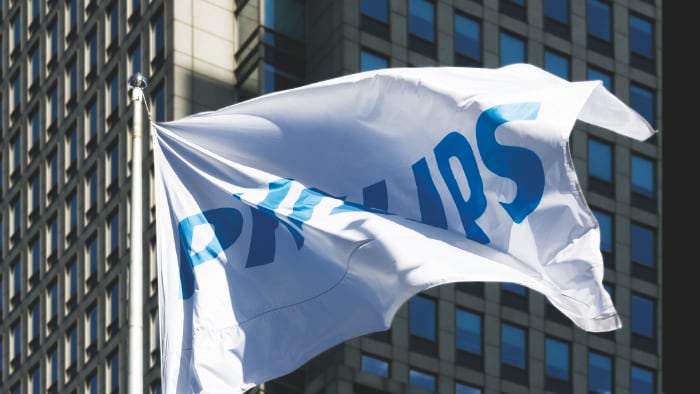Doubling circularity to accelerate climate action
May 23, 2022 - Reading time 4-6 minutes
The latest IPCC report on climate change makes it clear in the starkest of terms – humankind is running out of road. "We are on a fast track to climate disaster," said United Nations Secretary-General António Guterres.
The world needs to transition to a low-carbon, sustainable economy that keeps the global temperature rise well below the 2 °C laid down in the 2015 Paris Agreement. And ideally below 1.5 °C. It is now or never if we are to avert the dire consequences of global warming. Greenhouse gas levels must start dropping by 2025.
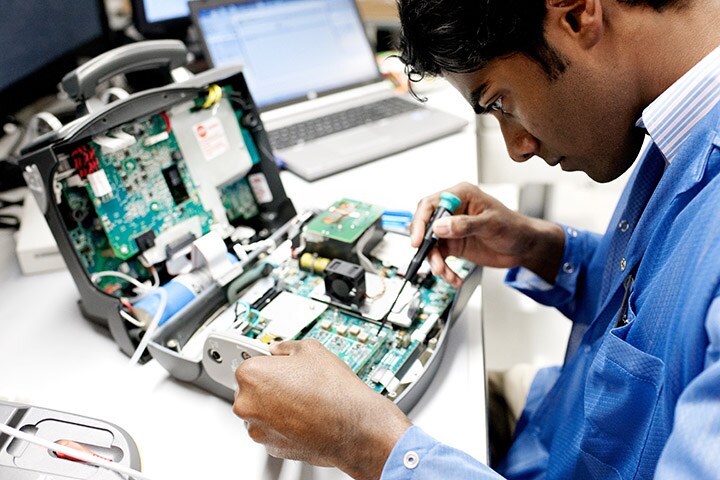
Understandably, the debate on how best to tackle climate change often focuses on emission-reduction and carbon-offsetting plans. Yet circular economy is a critical – though often overlooked – part of the discussion, as it addresses the linear ‘take-make-waste’ production model that still largely dominates the world’s economy and accounts for so much of global emissions.
Doubling circularity is one of the key mitigating strategies available to tackle climate change. At present, only 8.6% of global production is based on circular economy principles . Circular economic models that focus on the circulation of products and materials and design out waste could reduce global emissions by up to 40% [1]. Not to mention potentially making our social infrastructure and supply chains more resilient. A win-win all round.
Circularity at Philips
In a circular economy, value is created with minimum resources, products and materials are kept at maximum value throughout their product lifecycle, waste is eliminated, and natural systems are regenerated. At Philips, we do this through innovative service models, product take-back, refurbishment and parts recovery, and smart digital solutions, among others.
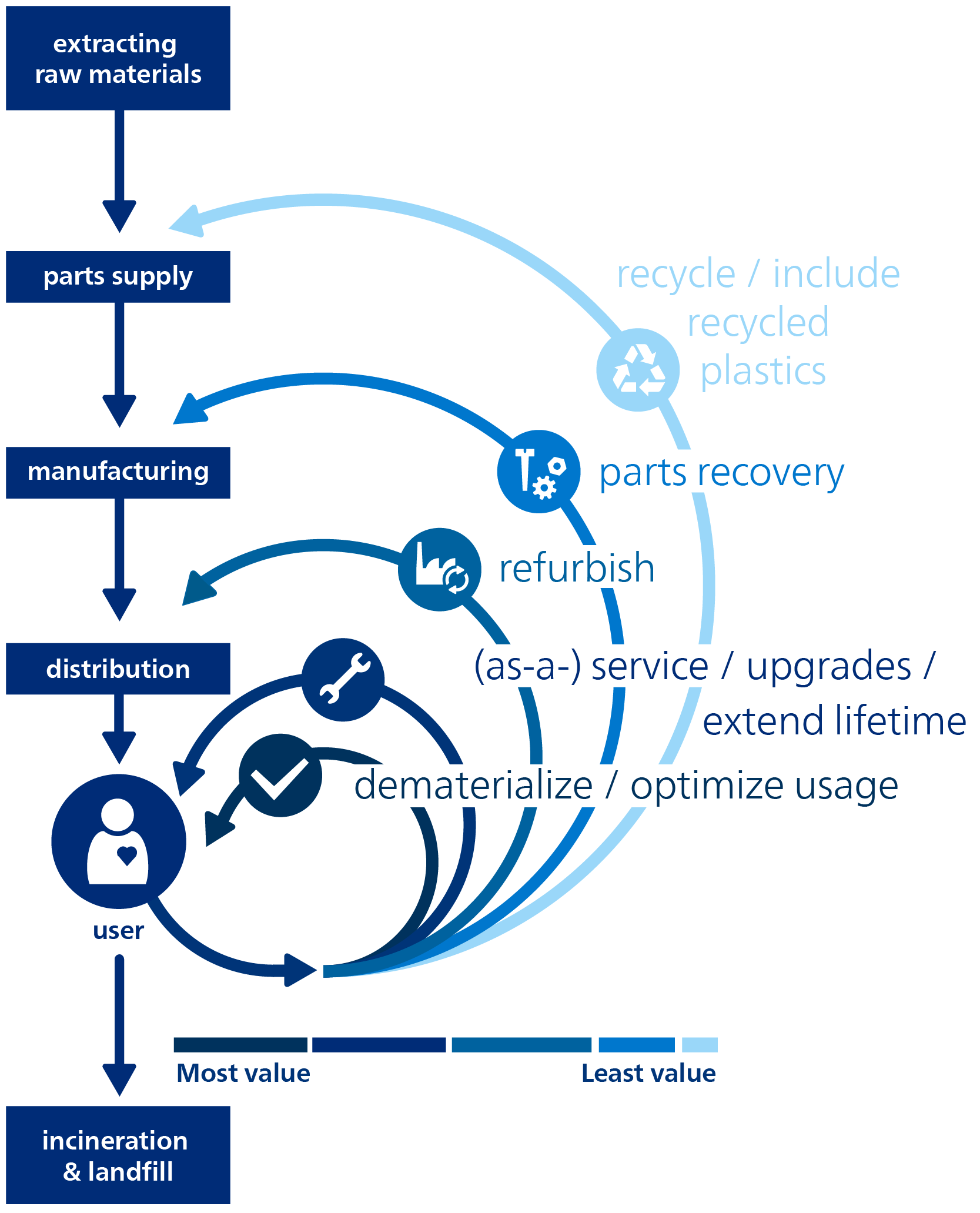
With new periodic, usage- and outcome-based business models, we are shifting from selling the physical product or system to offering its use as a service. That way, our health system customers and their patients get the functionality they need, without significant upfront capital expenditure. Models like this also support multiple re-use and recycling.
We offer a trade-in on all large medical equipment deals that we have won and take care of responsible end-of-use management, such as refurbishment, remanufacturing or recycling. Our Philips Circular Edition portfolio allows customers to benefit from refurbished, upgraded and quality-tested technology at lower cost. As part of our ambition to close the loop for all professional equipment by 2025, over 3,000 systems were traded-in by our customers in 2021.
Smart digital tools and software enable us to ‘dematerialize’, delivering maximum value with minimum resources. For example, supporting the shift of care from resource-intensive clinical facilities to networked lower-cost settings and the home, thereby giving more people access to care.
We are also witnessing the transition to cloud-, service- and software-based solutions, saving on the materials needed for on-site enterprise hardware and reducing CO2 emissions.
Designing for circularity
Globally, we can address a huge proportion of greenhouse gas emissions by changing the way products are made and used. Of course, circularity doesn’t come about by itself. We have to make it happen, by embedding circular design in innovation roadmaps and translating design choices into smart procurement.
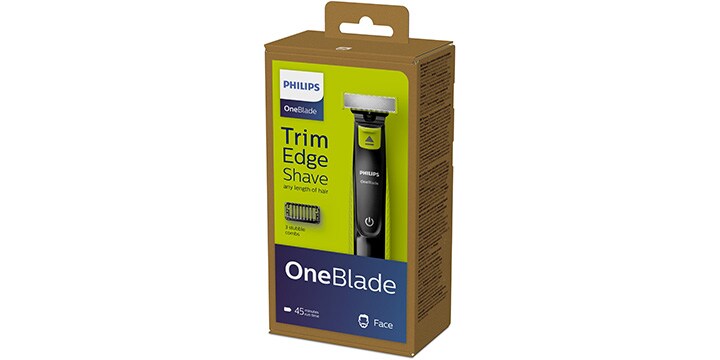
Circular design is all about making the right choices early in the product creation process, so that materials and components are suitable, at end-of-life, for repair or refurbishment and re-use, thus helping to close the materials loop. With our Philips EcoDesign program, we work to increase the energy efficiency of our products and solutions, make our packaging sustainable, phase out unwanted materials, and design for circularity. This means, from the outset of the product creation process, designing for less weight and for recycled content, as well as designing for serviceability, upgradability, modularity, recycling, parts recovery and/or refurbishment.
Circularity in action
At Philips, we are teaming up with our customers and suppliers to devise solutions that help improve people’s health and well-being while respecting the planet. We believe that, by working together, we can reduce our joint carbon footprint and create a sustainable and more resilient healthcare industry. Circularity is a cornerstone of these endeavors.
In the United Kingdom, for example, research released by the University of Exeter and Philips urges the NHS and its suppliers to systemically adopt circular economy practices in order to meet the NHS’s ‘net zero by 2040’ target and improve patient care. In France, Philips has developed a partnership with Rennes University Hospital to reduce the hospital’s carbon footprint, e.g. through the use of refurbished equipment.
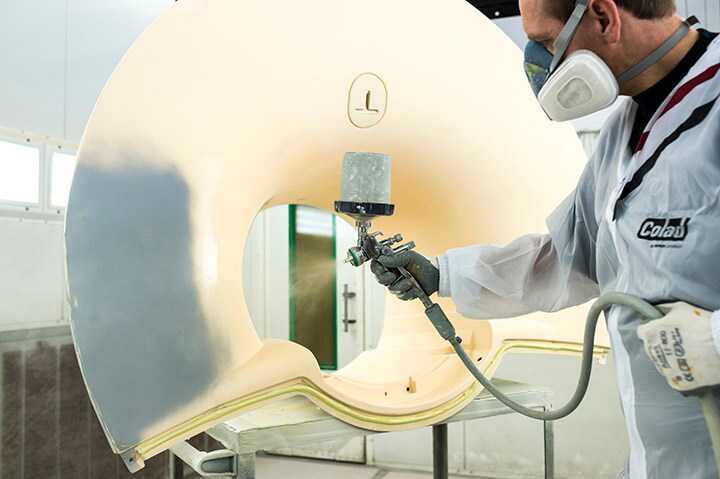
Let’s work together to achieve the necessary impact
The Platform for Accelerating the Circular Economy (PACE), co-chaired by Philips CEO Frans van Houten, has called upon global stakeholders to join the effort to double global circularity by 2032 – by making more sustainable consumption and production the norm. This will support the drive towards climate-neutral and inclusive economies. We fully endorse this ambition and encourage our industry peers to join us in putting circularity front and center – setting targets, delivering on them, and demonstrating tangible impact, while sharing learnings and progress to show it can be done.
To help companies and organizations implement circular business models, the necessary enabling conditions need to be created at scale. For instance, incentivizing consumers and business customers to return products through deposit and buy-back schemes. And setting up adequate collection and processing networks. Governments and other regulators have a role to play here, by offering legislative or tax incentives that encourage circular practices, and by eliminating regulatory roadblocks. Trade associations can help too, by advocating and harmonizing sustainable public procurement practices.
Increasingly, leaders are recognizing that such ‘ecosystems of collaboration’ are vital if we are to generate the momentum needed to propel us into a circular future. By teaming up to scale learnings and accelerate, companies responding to the PACE call to action will be joining a growing global Circular Economy movement.
What gets measured gets done
We see a need for global circularity metrics to ensure consistent measurement and reporting of progress. We are encouraged by the steps taken by the US Securities and Exchange Commission to require companies to disclose their greenhouse emissions and climate-related risks, as well as the work being done by the EU (draft European Sustainability Reporting Standard) and the International Sustainability Standards Board.
At the same time, we at Philips will continue to work closely with our partners to contribute to the development of practical, actionable circular metrics in a way that is aligned, meaningful, measurable and user-friendly. For example, as part of our contribution to PACE and the Capital Equipment Coalition, we have refined metrics that are critical to scaling circularity in the capital equipment industry. We urge developers to consider and address the highlighted gaps and begin measuring in order to start reaping the benefits of a circular economy.
[1] Circle Economy. 2021. Circularity Gap Report 2021
[2] Ellen MacArthur Foundation. 2019. ‘Completing the Picture - How the circular economy tackles climate change’


